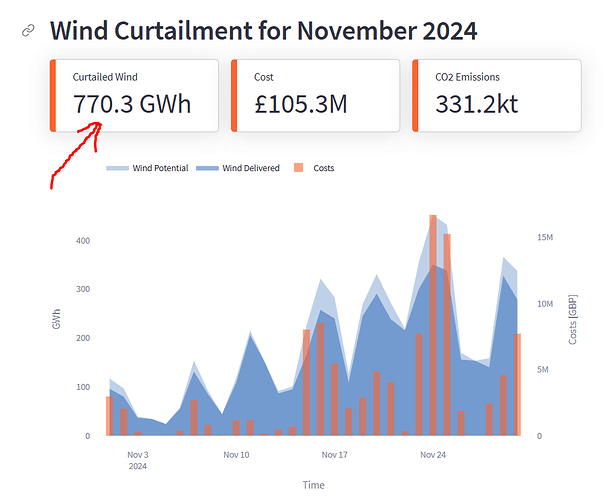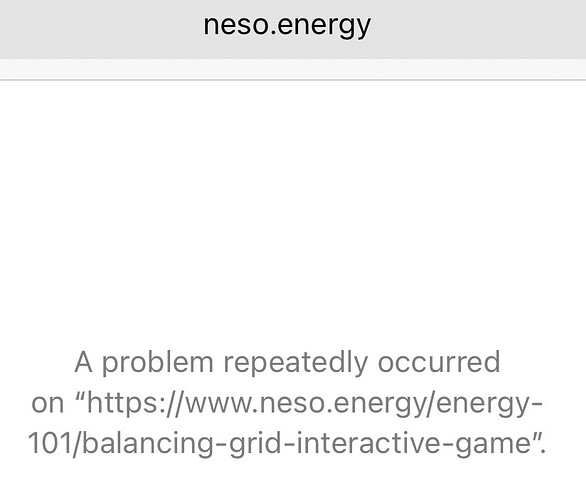I took part in a Carbon Co-op session on how sharing batteries in a neighbourhood might work. We played a game, to illustrate how individuals can contribute to lowering demand on grid, and yet still satisfy the energy needs of differing lifestyles.
A few days ago I attended an online U3A event on balancing the grid, which had many references to the newly formed National Energy System Operator (NESO), whose remit is to balance the grid! Some huge banks of batteries are playing a part here as well.
Have just started exploring the quite impressive NESO website and found this game:
(Balancing the Grid - Interactive game | National Energy System Operator)
Something for the teenagers when they get bored during the xmas holidays perhaps?  A career choice for gamers?
A career choice for gamers? 
Unfortunately grid balancing is a carbon intensive process. When reducing power it is cheaper to compensate the lowest cost producers for stopping their production. That’s wind and solar. When inviting bids for peakers the gas turbines can react fastest.
When I write that it is cheaper to curtail wind it still comes to a lot of money and the only solution I can see is to reduce gas facilities. Certainly no new ones should be built.
For those interested:
At the U3A presentation there was a lot of talk about interia, and maintaining 50Hz.
I don’t fully understand the physics, so apologies if I have misunderstood, but I think that means wind and solar stop generating energy suddenly, rather than ramping down in the way gas generators do for instance. Taking your foot off the accelerator was the analogy used - you will continue to move forwards.
There is tech being developed which can provide that inertia to support renewables - but can’t remember details.
My understanding is that, in summary, nuclear can provide a base load but is not agile, solar and wind are not reliable, but can be switched off most easily, hydro is like a battery which is discharged at once(?), gas is agile and quickly responsive.
Batteries, at both industrial and domestic scale can smooth out demand.
But we will still need some gas capability in the short term for responding to gaps in other generation & storage tech. Agree that there should be no need to build new gas fuelled generators.
Wind and solar in themselves can graduate down to 1Watt output but the inverters they use to convert to grid voltage cannot. This results in a gradual decline followed by a sudden drop to zero when the inverters’ limits are reached. That point is predictable if you are so inclined and backup power can be cut in at the required instance. The same doesn’t seem to be true of my battery inverters so I assume grid scale batteries can also graduate if required. Also my home batteries and inverter can maintain a 50Hz supply to the house when there is a power cut and no inertia.
My understanding is that for hydro, including pumped storage, a minimum flow is required to turn the turbines but they are incremental, so can adapt to demand within a predefined range.
Inertia is a funny one. The high voltage backbone to the grid is DC and therefore has no frequency. It is stepped down at transformer stations which also convert to AC at 50Hz. The older kit needs metronome effect of an existing grid to match the cycles (grid inertia) but newer ones are “grid forming” meaning that if there is no grid supply, for example when restarting after a power cut, that can generate their own AC cycle. As these proliferate, the need for inertia will disappear.
Gas power stations can create their own inertia. Hence the current need to keep a few.
PS. Hydro can also create its own inertia.
1 Like
Unfortunately I can’t play the game.
Not sure why? The link works for me.
![]() A career choice for gamers?
A career choice for gamers? ![]()

